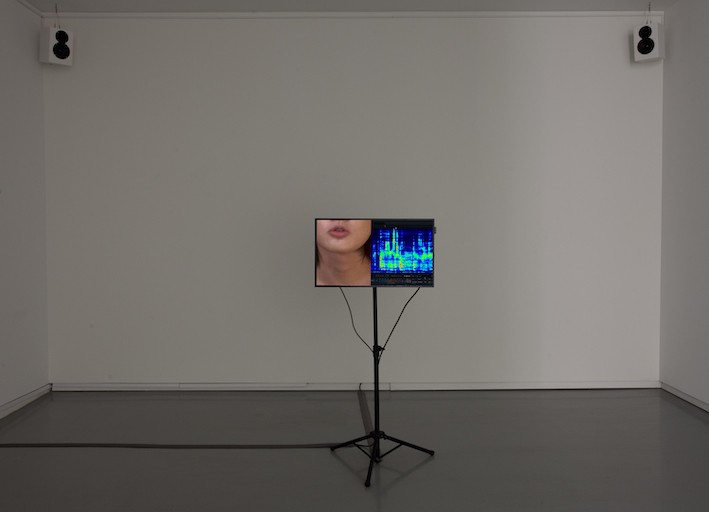Sound Art Students Collaborate in ‘Sensory Meridian’ Exhibit by Mentor Michael Joo
Sounds Art students Yixuan Shao and Avishag Cohen Rodrigues collaborate on Visual Arts Mentor Michael Joo’s Sensory Meridian in Chicago, Illinois.
Presented by Kavi Gupta Gallery, Sensory Meridian is a multi-media exhibition of works by Joo. The exhibition features “three new sculptures of disincarnate body parts, alchemized from scans of historical works in the Smithsonian Archives, exploring issues of representation, transmission, and transformation,” as stated on the website.
Shao and Rodrigues were on a five person sound/video collaborative team that created an accompanying audio-visual installation to fill the space with the “whisperings of the voice of a social neuroscientist observing and describing human interactions that we cannot see. Designed to trigger ASMR (autonomous sensory meridian response), the quadraphonic audio illustrates the power of absent bodies to stimulate and affect bodies who are present, while the video, showing fragments of the neuroscientist’s head while she’s talking and graphical sound analytics, further explores disconnected presences and mediated realities.”
Sensory Meridian is on view through March 13, 2021 by appointment only.
Joo is a Senior Critic in Sculpture at Yale University and is a mentor in the Columbia University MFA program. His work is in the permanent collections of the Guggenheim Museum, Museum of Modern Art, and Whitney Museum of American Art in New York. Joo’s non-linear, almost cyclical approach to his practice, together with his combination of scientific language and research, results in work that is a documentation of process. Whether chemically treated, silver-coated or photo-based, Joo’s artwork combines a range of techniques associated with sculpture, painting, photography and printmaking. He continues to blur the boundaries between art and science through his investigation into ontology, epistemology and entropy; creating a cross-disciplinary and multi-dimensional dialogue to engage, question, meditate and explore. By juxtaposing humanity’s various pools of knowledge and culture, Joo addresses the fluid nature of identity itself. It seems as if the artist’s intention is to achieve the unachievable: to make us see an object in real life that is barely conceivable as thought alone.
Shao (b. Tianjin, China) is a New York Based artist trained as a classical violinist. Her works are often open-ended, or “guided untitled,” inviting the viewer to engage in conversations around the work itself with their own cultural and sociopolitical beliefs. She takes an interest in the longer effect of such a mode of communication, not only taking place in the exhibition/concert space, but also in day-to-day life. Primarily working in sound and visual arts, Shao’s artistic practice is one of listening, before it is one of making. She listens to the gaps in histories caused by cultural and environmental erasures—listening, not only as a physiological function, but also as an internal state of awareness to her surroundings. In her work, she materializes these gaps and centers the dialogue around survival and preservation based on her research in the interconnected fields of history, biology and geology. She enacts material cultures to trace a non-hierarchical and nonlinear relationship between nature and culture, bodies and the environment, humans and machines. With constant reflections on the relationships between self and others from her own biology and identity, she challenges her reality about those structural and ideological divisions.
Rodrigues is a well-established musician—Rodrigues plays the guitar and sings, and has performed in multiple venues in New York, including the Music Hall of Williamsburg. She is asking herself what it means to study sound art under the guidance of a university-structured program. Though Rodrigues comes from a highly musical-performance background, she is not interested in the ways formal music is different from sound art; she seems to be interested, instead, in the ways all music is part of sound art, and in expanding the types of work that can be classified as sound art.


